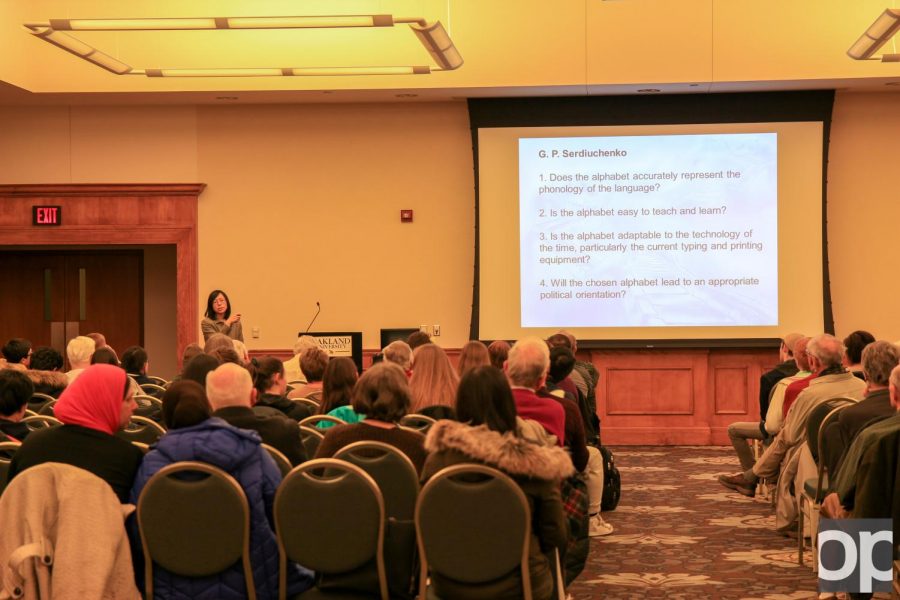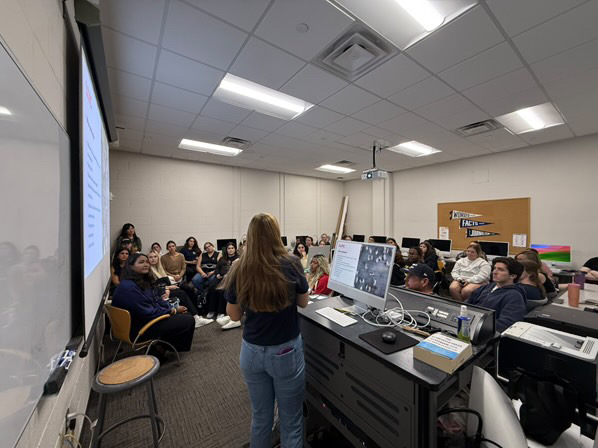Complex and ever-changing, the Chinese language in History Comes Alive
The Banquet Rooms of the Oakland Center played hostess to a different kind of feast, with the Chinese language and social progression of language on the menu.
“This is the 14th season of our History Comes Alive lecture series,” said Todd Estes, professor and chair of the history department at Oakland University. “We have one more talk to come and the topic is ‘The Fatal Attraction of Nationalism: The Politics of Identity and Belonging in Modern Europe. A great topic, very, very timely and our speaker is Derek Hastings who has just published a book on the subject.”
On Feb. 13, the History Comes Alive lecture series checked off another event with Professor Yan Li’s lecture on the development of the Chinese alphabet.
Li earned her Ph. D. in world history from Northeastern University in Boston with a concentration in modern China. She published her first book earlier this year and is already at work on a second book project.
“She will be doing some research work on that this summer with the aid of her third summer faculty fellowship,” Estes said. “Yan’s only been with us for six years and she’s already earned her third summer faculty research fellowship. Clearly, those of us in the department are not the only ones who are impressed with her work and her scholarship.”
The topic of the night was the Chinese language, following the effort to replace the very difficult Chinese characters with an easier phonetic script.
“The Chinese script that is being used today can be traced back to the oracle bone times,” Li said. “This was more than 3,000 years ago [and] was the earliest form of the Chinese writing system.”
These oracle bone symbols are already a well developed writing system. Before the oracle bone systems, or pictographs, the Chinese writing systems had been evolving for more than 2,000 years. The Chinese writing system has more that 5,000 years of history.
Many issues with the system began to come to light. One of these is the number of characters that the Chinese language has.
“By the end of the 17th century, the number of characters had reached 47,000,” Li said. “The dictionary that has collected the most characters has more than 85,000.”
A majority of those are dead or obsolete. Usually a person needs about 2,500 characters. Those are the frequently used characters.
China then saw a number of reform attempts, ebbing and flowing and changing with each passing of power. When the communists came to power in 1949, they continued their interest in exploring a phonetic script to replace the difficult, thin characters altogether.
“They had a whole series of reforms and this included, first of all, the simplification of the Chinese characters, to use less strokes, to simplify the strokes so that writing would be a lot easier and they attempted to nationalize speech,” said Li. “They also tried to develop a standard writing system. All of this happened in today’s China.”
The unification of the Chinese language allowed the huge population of China speaking different dialects to communicate in the region on a written form.
“It was the glue that brought the people of China together,” Li said. “To mold a consciousness that they all belonged to the same culture.”








